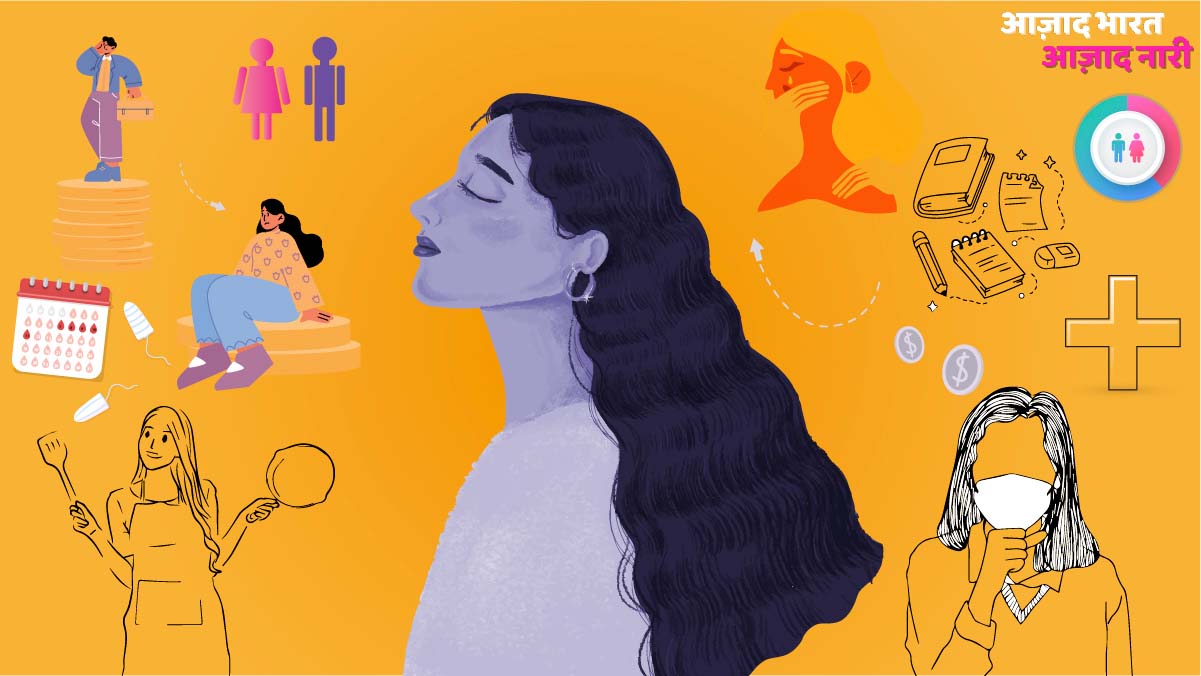As India celebrates 76 years of Independence, HerZindagi asked “Are Women Really Free in India?” Freedom didn’t just mean breaking free from the shackles of colonialism. For women, the journey was always laden with multiple other roadblocks.
In an exclusive chat with HerZindagi, Delhi Commission For Women chief Swati Maliwal said, "I feel that even after 76 years of independence, women aren't completely independent in the nation. We face a lot of issues, there are a lot of roadblocks, economic, social, political…in the way of a woman's life which makes her battle through life.” Read the full interview with here, or watch a clip of it here.
From on-ground reports to insightful dialogues with key stakeholders to deep dives into various sectors like health, workplaces, crimes and other sectors, HerZindagi tried to decode the gaps hindering women’s freedom in 2023. Here’s what we found.
Education Paves the Way
A fundamental building block of life, education plays a more significant role in impacting her decisions, empowering her and giving her agency. A solid education not only opens doors in her life ahead but also gives her the context and information necessary to maintain her well-being.
Despite the Right to Education Act being in place, we found that women continued to struggle to seek education. 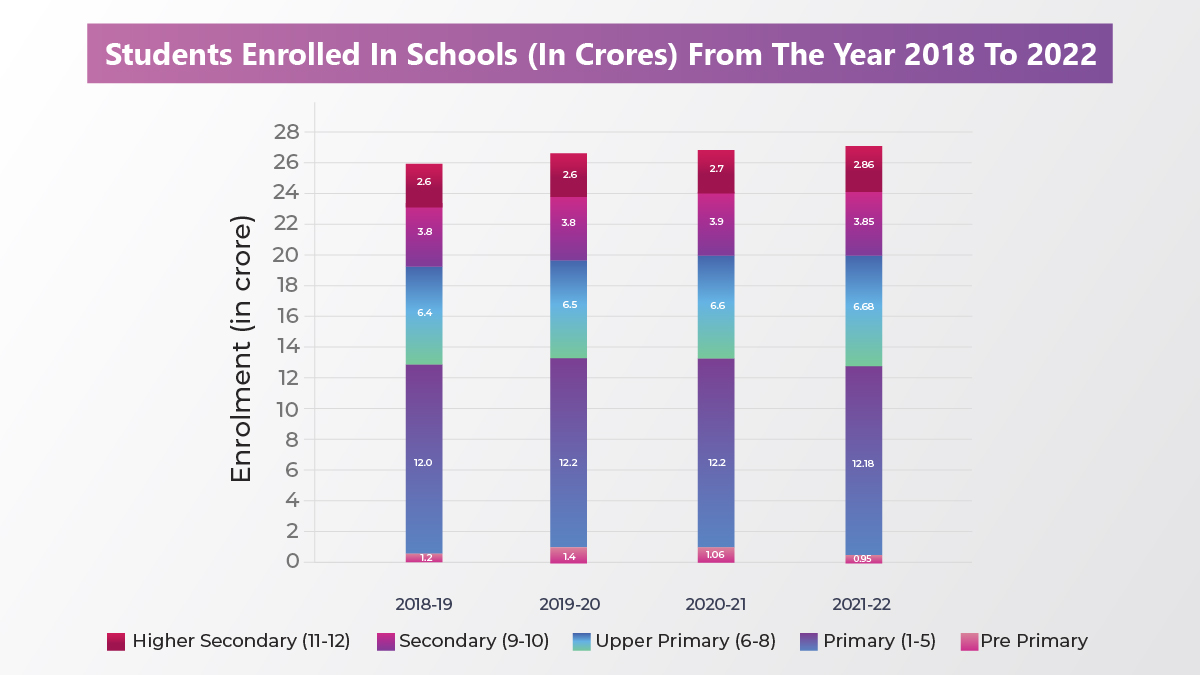
Even though the number of students enrolled in school has steadily increased over the years, the ratio of boys to girls remains skewed in favour of boys. Infrastructure, mindsets and poverty were key factors that posed problems for girls getting a quality education.
Read: Azaad Bharat Azaad Naari: Girls In India Continue To Battle Barriers In Their Quest For Education
In an exclusive chat with HZ, Director of the Centre for Social Research, Delhi, Ranjana Kumari said, “Even today, sending girls to school is a big challenge even though the right to education is a fundamental right in the country. Even if girls go to school, the dropout rate is high. Speaking of careers, there has been a constant drop in women's participation in work, however, the numbers have increased in advanced countries. Further, women are also bound when it comes to making any kind of decision for themselves, be it around education, fashion, diet, or going forth in society.” Read the full interview here.
The Gap in Health Hampers Overall Quality of Life
“We aren’t so concerned about girls’ health as much as we are about boys’. We value boys more,” said Ranjana Kumari, social activist and director of the Centre for Social Research in Delhi.
In our patriarchal society, where women are often marginalised, they tend to have reduced educational opportunities, lower earnings, higher illness rates, and increased suffering. Biases, limited awareness, general neglect, and restricted access collectively contribute to hindering women's ability to access healthcare services.
From a skewed gender ratio in the number of men and women patients visiting hospitals to women being left out of vaccinations, to women using lesser insurance coverages, the gap in health, we found, was overarching. 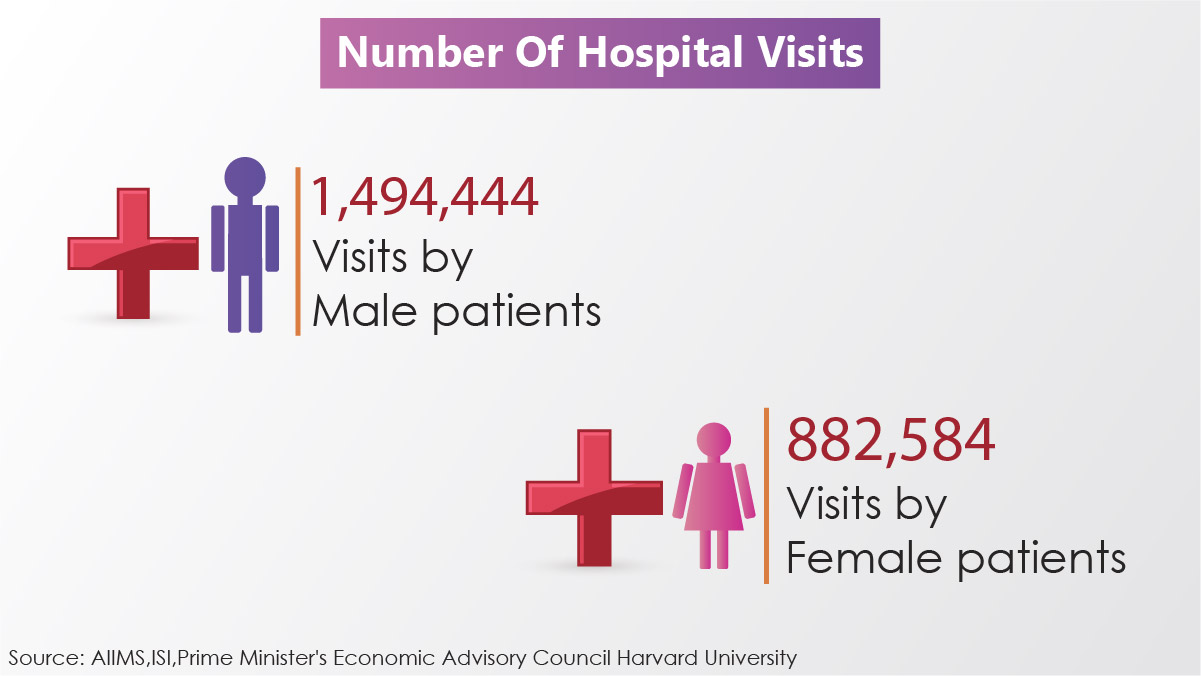
Sanghamitra Singh, Chief of Programmes, Population Foundation of India, said that the neglect for women's health is reflected in the nutrition status of women and the unmet need for family planning or contraceptives. “Women want to access healthcare but aren’t able to due to various barriers. Either they aren’t allowed to go out of their homes alone, or they don’t know how to approach a healthcare provider,” she added. Read the full story on the gap in health here.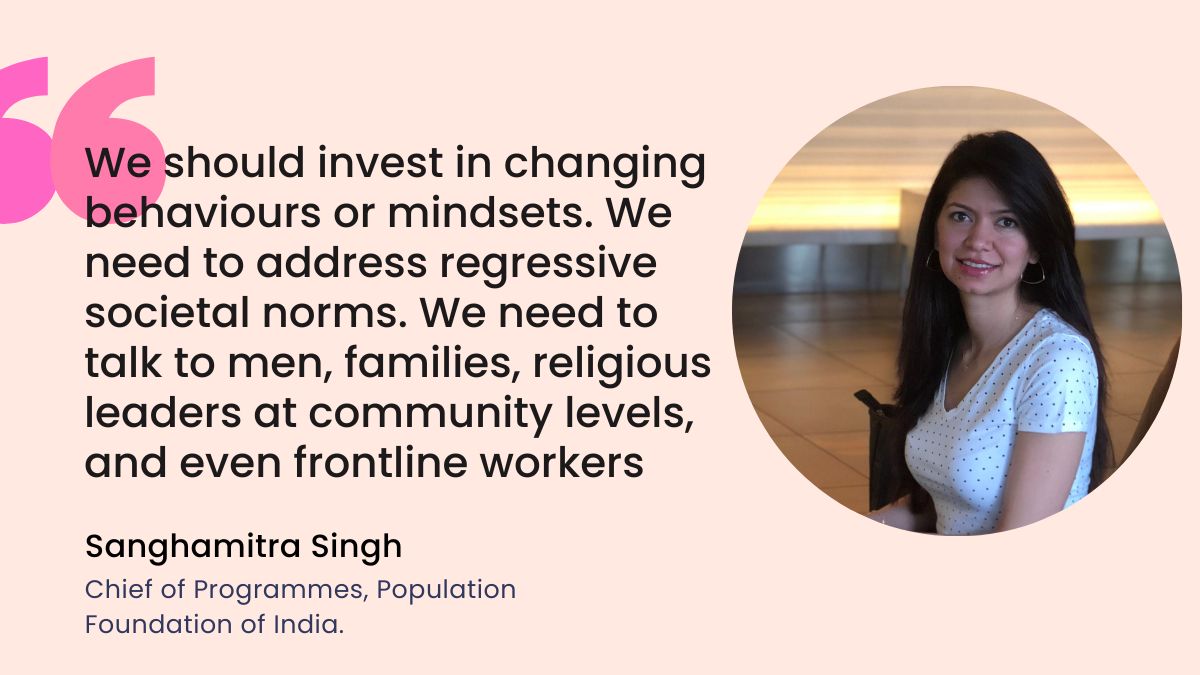
Menstrual Health Remains a Tabboo
A particular facet of health, menstruation has been steeped in shame, stigma and prejudices. From access to hygienic menstrual products to a lack of methods in managing pain accompanying periods, we looked at different issues that continue to plague women.
According to the National Family Health Survey (NFHS), 64.4 per cent of women aged 15 to 24 years opt for sanitary napkins, while 15 per cent use locally made sanitary towels, and 0.3 per cent choose menstrual cups. The stats continue to show that there still are a huge number of women, given India’s population, who use unsafe sanitary products like rags, hay, cotton etc. 
NFHS 5 also establishes a direct correlation between factors such as education and wealth with menstrual hygiene practices. Among women aged 15 to 24 years without access to education, only 43.5 per cent utilize menstrual hygiene products.
In contrast, a significant 90.3 per cent of women with more than twelve years of education opt for proper sanitary measures. Read the detailed story here.
Gender Pay Gap
Women have main steady inroads into the workforce, but they don’t seem to get paid in a similar manner as men. We tried to decode why we still don’t have equitable, fair, inclusive workplaces. 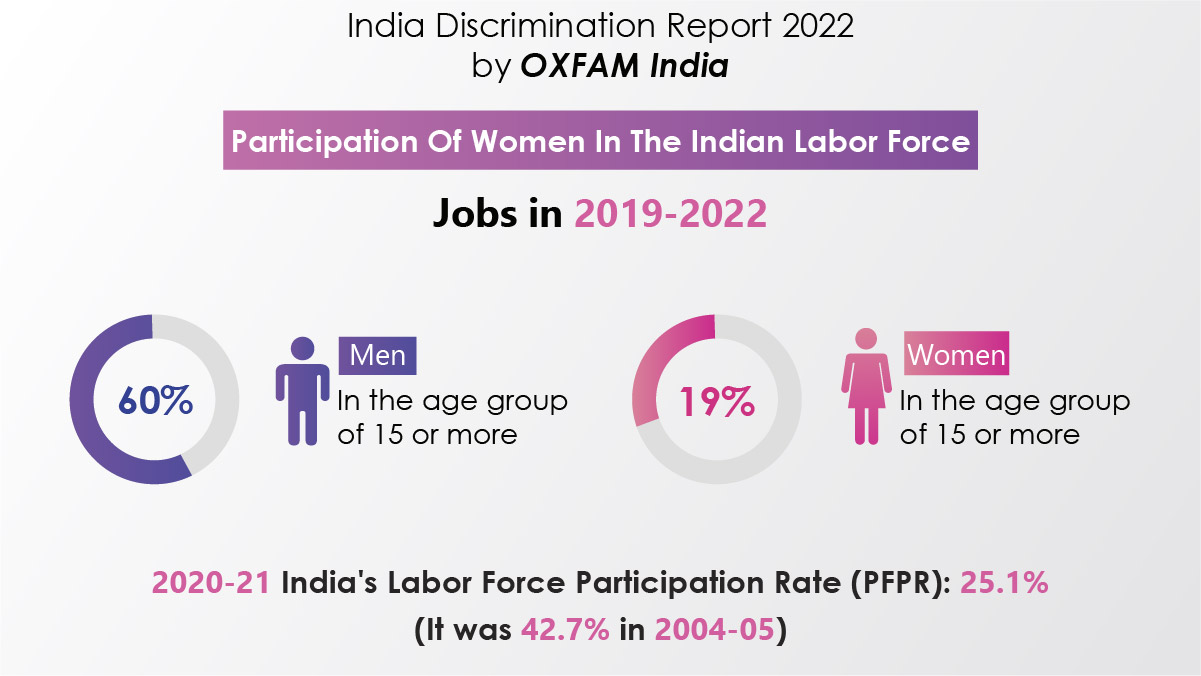
According to the OXFAM India Discrimination Report 2022, the female labour force participation rate in India for the year 2020-21 was 25.1 per cent, which marked a significant decline from the 42.7 per cent recorded in 2004-05.
The report also highlighted the number of people aged 15 and above who held regular salaried or self-employed positions. Men constituted 60% of this category, while women comprised a mere 19%. Additionally, the data showed a glaring difference in pay, as men garnered an average earning of ₹19,779, and women earned an average of ₹15,578. Read the full story here.
Crimes Against Women Makes Women Feel Unsafe
Even though a gross majority of crimes against women go unreported due to lack of access, stigma, societal conditioning, and victim blaming, the numbers continue to be appalling. 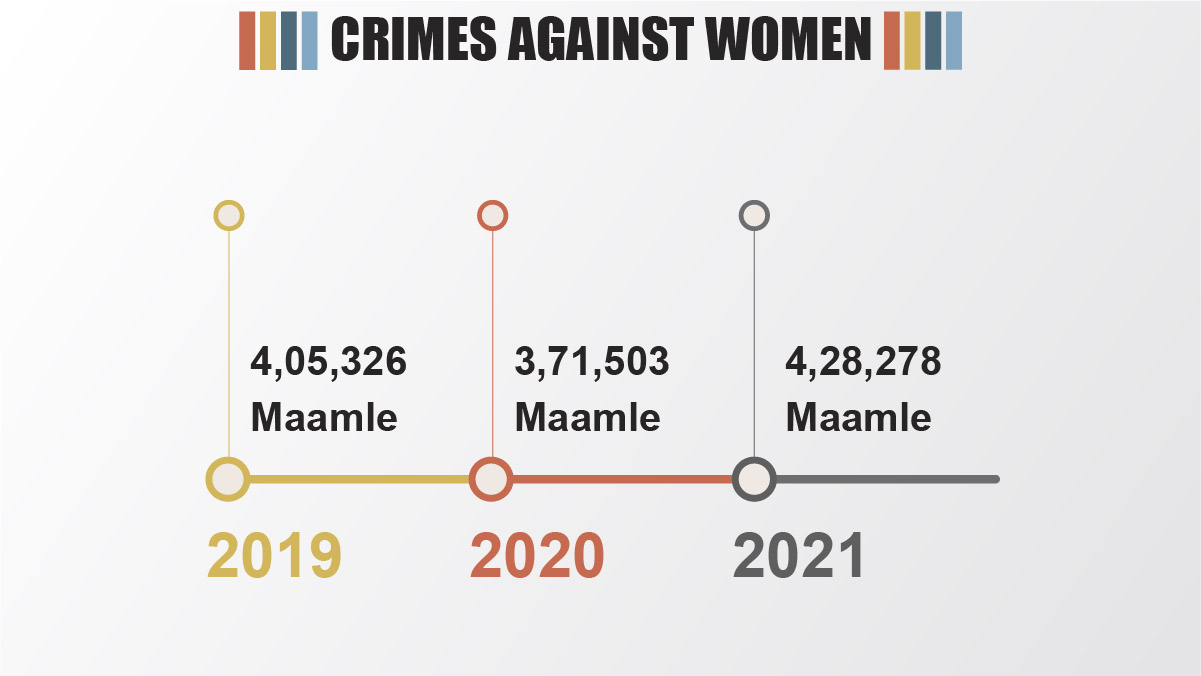
About 31,000 complaints of crimes against women were filed in the year 2022, the highest since 2014. The highest number of crimes against women was related to the right to live with dignity, with 5,061 cases reported between 2019 and 20 and 9,710 in 2022.
From feeling unsafe while walking alone on the streets at night, to a never-ending slew of headlines that remind us about brutalities against women, these realities haunt women every day. Patriarchal norms, lack of awareness and education about gender rights, weak legal enforcement, gender inequality, and cultural practices are some reasons why. 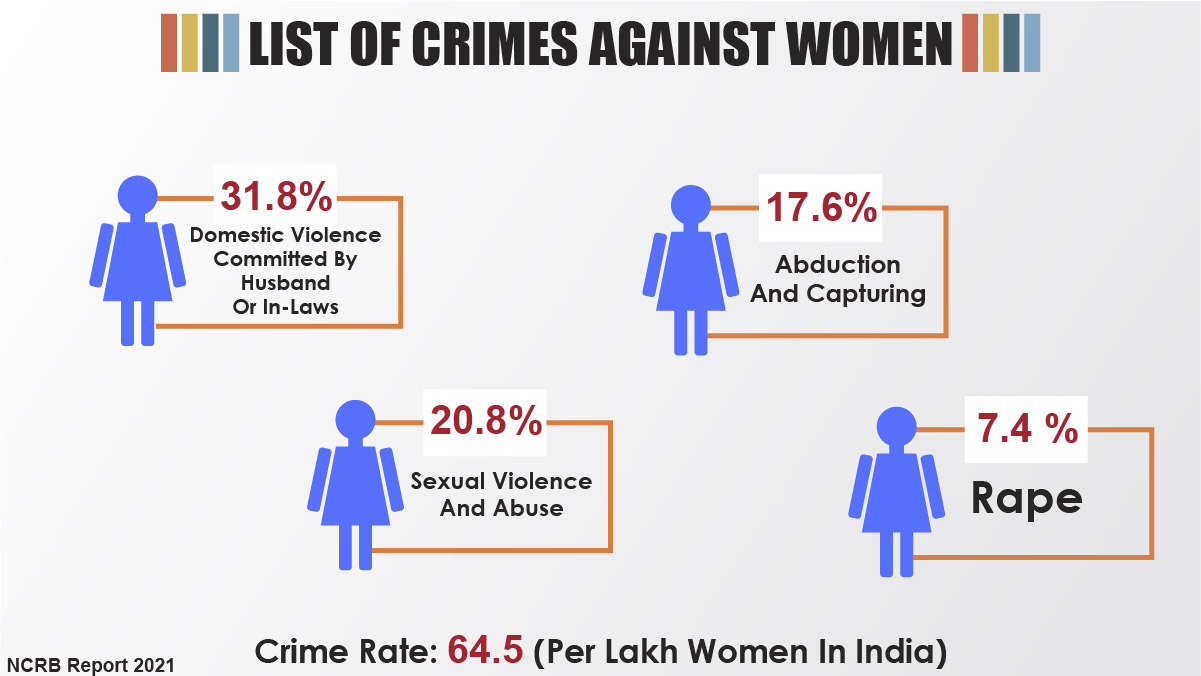
Women's Participation in Politics and Bureaucracy
A key way of upliftment for women is through having women in law-making and policy-enforcing roles. According to the data collected by the Inter-Parliamentary Union (IPU), women constitute only 14.44% of the total members of the 17th Lok Sabha and a mere 10.5% among all Members of Parliament as of October 2021. A similar situation is observed in state assemblies, with an average representation of female Members of the Legislative Assembly (MLAs) standing at a humble 9%.
When compared to the rest of the world, these stats position India far behind other countries like Pakistan (20%), Bangladesh (21%), and Nepal (34%).
Of a total of 11,569 IAS officers assuming roles between 1951 and 2020, only 1,527 were women. As of 2022, a meagre 14% of IAS Secretaries were women, encompassing just 13 out of the 92 available positions.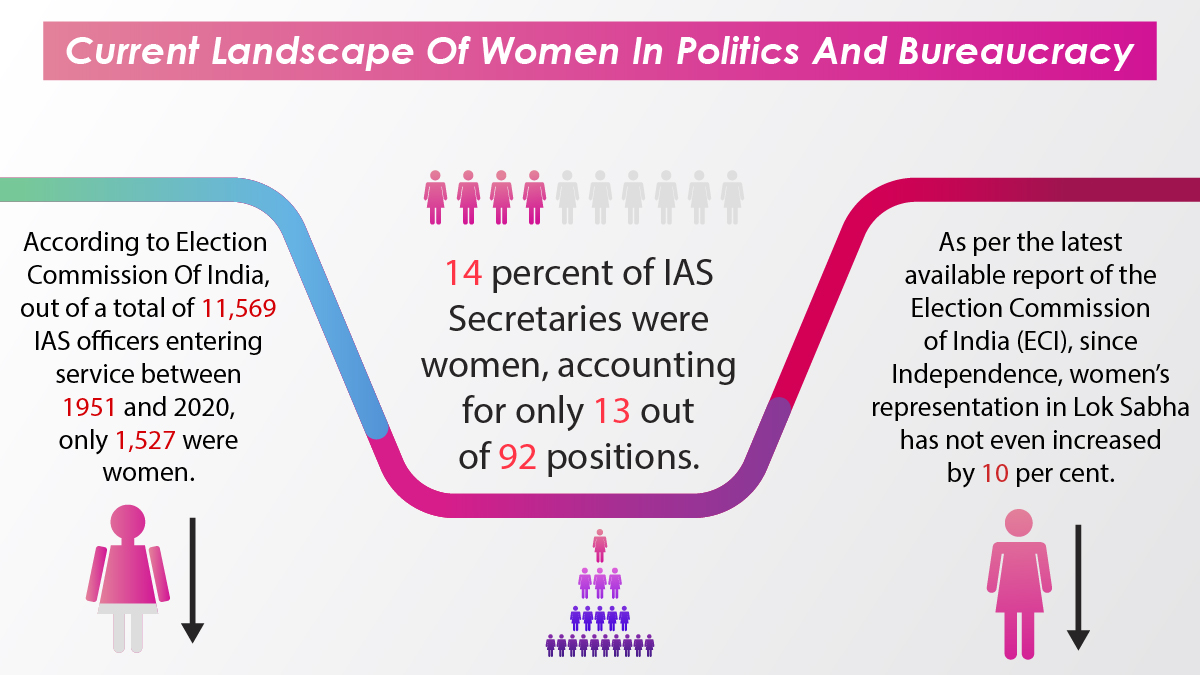
Until women assume higher, significant roles in policy-making and implementation, women’s freedom would remain an elusive dream.
Read: Azaad Bharat Azaad Naari: Assessing The Current Landscape Of Women In Politics And Bureaucracy
On-Ground Reality
While data shows the overarching scenario prevalent in the country, our team went on the ground to hear what women think of freedom, in their everyday lives.
Women only corroborated the data insights, highlighting how the rising crime rates make them feel unsafe not on at night, but at all times. They spoke of how patriarchy and societal conditioning lead them to be burdened with responsibilities, without a voice of their own. They pointed to how they aren’t treated with the same respect and it’s a mix of tonality and approach meted out to them by men and the society at large, that makes them feel inferior.
View this post on Instagram
Watch all the videos here.
In a highly insightful panel discussion moderated by Megha Mamgain, AVP and Content and Strategy for HerZindagi, Subuhi Khan, Lawyer and Activist, said, “Women face obstacles every step of the way. Some are killed in the womb. If women are allowed to be born, they face a world favouring men. Some aren’t given education. If they’re allowed to study, then they are often not allowed to work. If they’re allowed to work, they aren’t allowed to manage their own finances. Whether literate or not, women of all statures face domestic violence.” 
This points to how much harder women work to achieve the same basics that men feel entitled to, or consider the bare minimum since birth.
In the same discussion Preeti Pandey, Founder and Director of Dulari Devi Foundation said, “Families only feel complete once a son is born. If a daughter is born, they keep trying a second or third time, hoping for a son. This is true for learned and educated families too.” This points to the basic disparity that still exists in society, which prioritises its men over its women at every step of the way. 
Women face discrimination since birth, at every step of the way. Yet, as Ranjana Kumari, the activist points out, for our country to make any progress, making women a priority is the need of the hour. To do that, there has to be a multi-faceted approach that targets all the different segments of society, and a girl’s life.
Infographics by Khushi Goel
